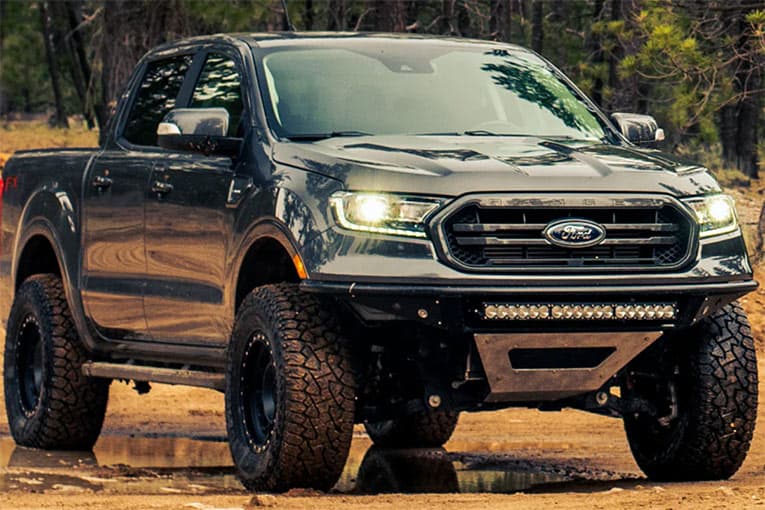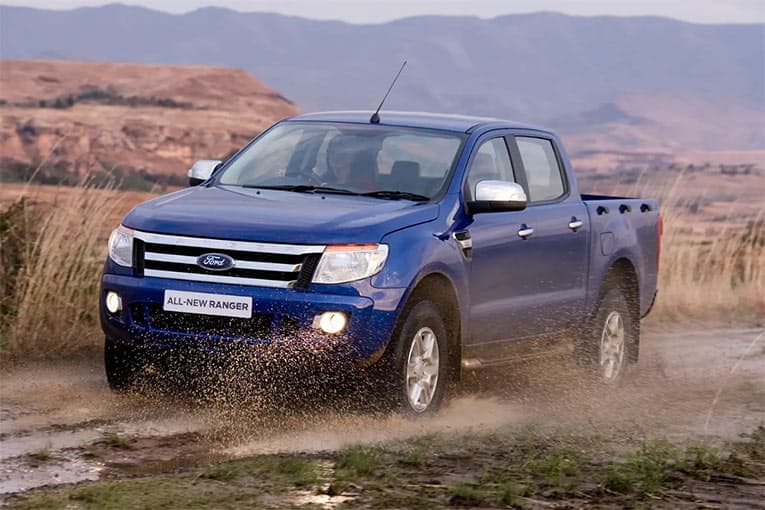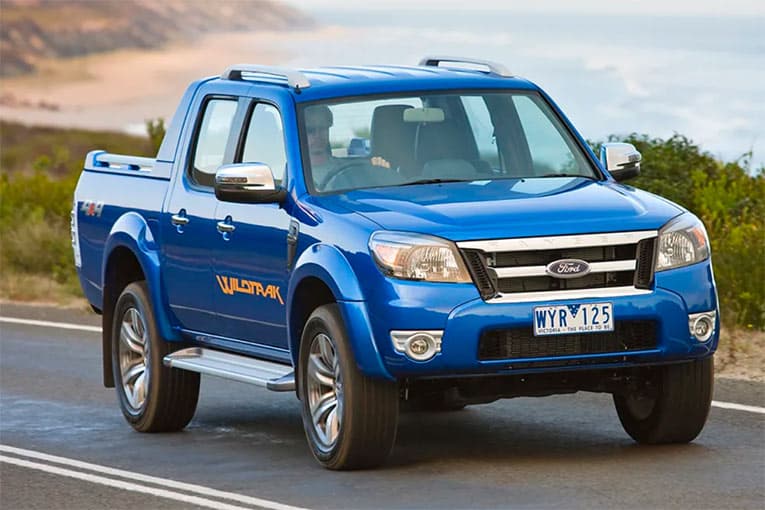Ford’s latest global compact pickup is as calm and composed off the beaten track as on sealed roads thanks to an all-new chassis frame, front and rear suspension and steering system. With a best-in-class water-wading capability of 800 mm and a ground clearance of up to 241 mm, the all-new Ford Ranger has morphed into a lean, mean driving machine. Increasingly, Ranger caters not only to the mining or forestry companies which require a tough pickup to handle off-road driving situations but also to customers who enjoy off-roading for recreation. Other customers drive off-road because their hobbies demand it, say, if they were to go fishing, mountain bike riding, bushwalking or camping.
One characteristic that sets Ranger apart from competitors is its capability on steep grades. A fully-laden Ranger, which weighs about 3200 kg, is also able to stop and then pull away on a 60% grade – not a feat easily achieved by most trucks. Ranger’s capability is further enhanced by a suite of technologies that is part of the new-to-Ranger Electronic Stability Program (ESP) such as Hill Launch Assist, Hill Descent Control and Roll-over Mitigation. Hill Launch Assist assists the driver when moving off up a slope, either in forward or reverse gear. When the driver releases the brake pedal and starts to accelerate to drive away, the feature holds the brake pressure temporarily for 2 seconds, ensuring the vehicle does not roll back, allowing the driver to pull away smoothly.

When going downhill either in forward or reverse gear, the driver can activate Hill Descent Control via a button on the dashboard for steadier braking. The feature automatically applies the brakes to slow the vehicle down to a set speed without locking the brakes and without the need for the driver to apply the brakes. If the Ranger is going too slowly, he or she can allow the vehicle to go faster by squeezing the accelerator or using the speed up or speed down buttons on the cruise control buttons. This is unlike competitors with a similar feature where the set downhill speed cannot be changed and is available only with four-wheel drive low-gearing. In comparison, Ranger’s Hill Descent Control feature is available on both high- and low-gearing, giving the Ranger better composure and the driver greater confidence in going down a steep slope.
To give the driver further peace of mind, Ranger has a Roll-over Mitigation safety feature that closely monitors the vehicle’s speed, lateral acceleration, yaw motion and steering angle, and will identify potentially dangerous driving conditions that would lead to the vehicle rolling over. Well before the situation becomes critical, it will cause the ESP system to intervene and control the vehicle speed and restore stability.
To give Ranger its outstanding ground clearance and class-leading water-wading capability, the engineers found innovative solutions to tuck key components out of harm’s way, from placing them higher up in the vehicle to finding clever locations for them so that they don’t become damaged if the pickup hits the ground or a rock. For example, the fuel tank is higher than the frame, which means it will never bottom out. Driveline components are mounted above the frame rail so that items like the transfer case and oil pan are protected by strong crossmembers. Key electrical components and air inlets are also strategically placed high in the engine compartment, enabling the pickup to go deeper than any others.

Ranger gets another level of protection through shields on vulnerable components. A shield on the fuel tank of 4×4 models, as well as a steel shield at the front of the vehicle, protects the front of the engine and the radiator. Engineers managed to double the strength of the front shield without making it heavier and it’s been tested that just the shield alone is able to bear the front axle weight of the vehicle.
The four-wheel drive models are equipped with a sturdy electronically controlled transfer case – for both manual and automatic transmissions – that allow drivers to shift on the fly from 4×2 to 4×4 anytime via a switch conveniently located on the console. Low-range gearing can be enabled for extra torque or additional downhill braking and the Ranger offers lower overall ratios for improved off-road capability. When the low-range gears are engaged, the driver gets more control with the damped accelerator pedal which becomes less sensitive. This prevents unintentional acceleration due to the bouncing motion of the driver’s foot while moving over bumpy ground.

The Ranger’s ESP system also includes off-road logic which recognises when the pickup is driven on rough roads and modifies the system to ensure the best balance between stability and timeliness of interventions. In 4×4 models, the ESP system can be partially switched off to disable over- and under-steer control as well as engine torque reductions, while maintaining the brake intervention traction control. This setting is most suitable when driving through deep sand or extreme mud as vehicle momentum can be maintained whilst maximising available grip. The ESP can be switched to a second setting to further amend the ESP braking intervention that aids the initial pull away in snow and icy conditions. For customers who need more traction control, a limited slip rear differential or an electronic locking rear differential is available as an option. With the limited slip rear differential, power is maintained to both wheels when one of the wheels begins to slip.
A new feature on Ranger, the locking rear differential is activated by pressing a button on the dashboard. This engages a locking device through a clutch on the rear axle to “lock” both the rear wheels together so that they turn together at the same speed. This is extremely useful if one of the rear wheels loses traction completely because it is on ice, mud or lifted up in the air. Without a locking device, that wheel would spin up and all the engine power and torque would go to that wheel. But if the wheels are “locked” together, the wheel with traction gets enough power and torque to enable the vehicle to move forward even under challenging conditions.










